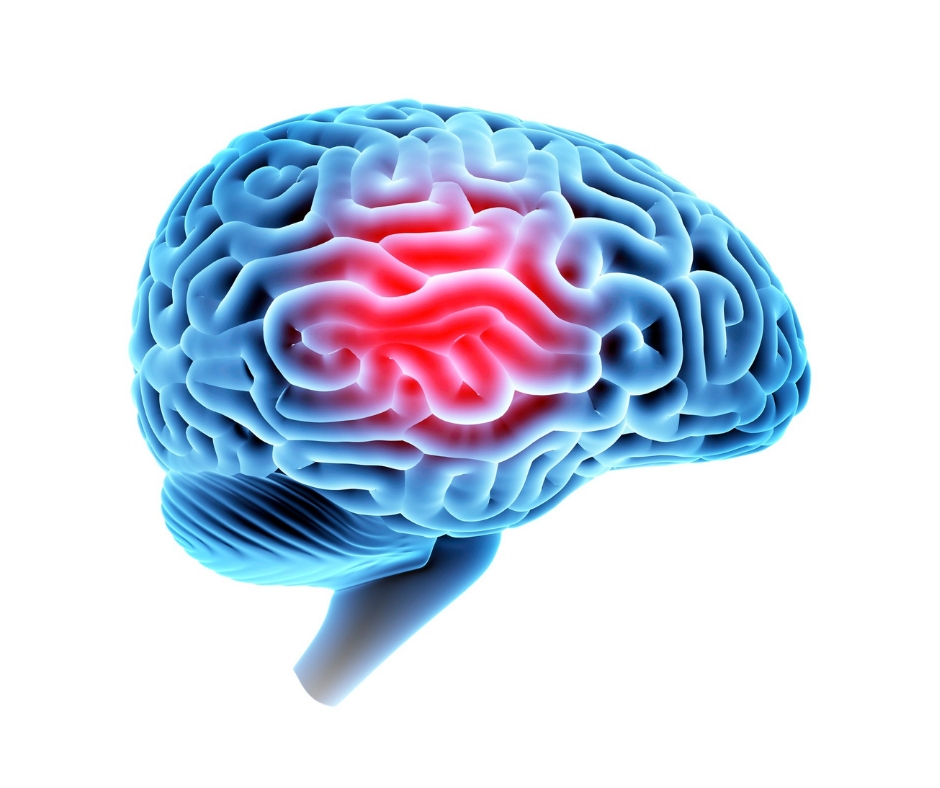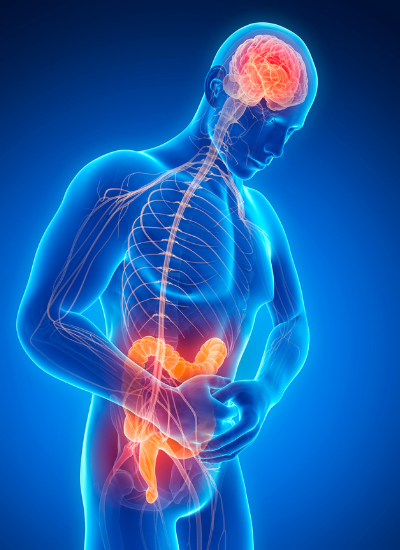By Claire Bacon, ACN, CNC
For many people, chronic pain flares up during times of stress. Have you struggled with pain for a long time? Did you try everything to alleviate your pain? Have you exhausted all solutions? Do your doctors say they “just can’t find anything wrong?” If you’re thinking yes, there may be more going on than a simple musculoskeletal problem. Maybe you’ve never realized, but there is a strong chronic stress-pain connection within the body. Sometimes, the physical pain is actually a manifestation of long-standing emotional stress. The negative emotions you unknowingly push into the subconscious can cause physical symptoms.

Physiology of the Stress-Pain Connection
The brain highly controls your stress and pain processes. If we can geek out for a moment, the limbic brain— hippocampus, amygdala, and prefrontal cortex—plays a critical role in how we remember pain. The brain integrates incoming stress signals with the physical body. This generates hormonal messages necessary for decision-making. This is a natural strategy for keeping you safe from harm. Innately, the same mechanism is present with chronic pain, depression, and post-traumatic stress disorder.
Did you know, the “second brain” is also called the enteric nervous system (ENS). Specifically, this is known as the living microbiome in your gut. Understanding the complexities of the gut microbiome is essential in overcoming many types of abdominal pain. The neurons of the ENS communicate using the same types of hormones as the central nervous system (CNS), including dopamine and serotonin.
Fear can easily provoke a stress response. Likewise, any perceived threat can do the same. This begins the secretion of hormones (epinephrine, norepinephrine, and cortisol) to promote “fight or flight” functions. Physical measurements of stress include blood pressure, heart rate, and salivary cortisol. Whereas, short-term stress is necessary and beneficial, prolonged pain may stick in a recurring physical-mental pattern.
Ultimately, chronic stress may perpetuate issues like cortisol dysfunction, widespread inflammation, and pain. Frequently, the nervous system remembers the heightened physical response. Regardless, the same emotions can trigger physical changes. This can happen even when injury is not present.

What the Stress-Pain Connection Means for You
Interestingly, many people who deal with chronic pain/tension issues describe themselves as ambitious, Type-A personalities. Typically, tender areas manifest in the shoulders, neck, low back and buttocks. Common “risk factor” conditions connected with emotional tension include:
- Migraines,
- Heartburn,
- Stomach ulcers,
- Colitis and/or spastic colon,
- Asthma and allergies.
By acknowledging you feel tension, you can purposely act to reduce your stressful thoughts or remove yourself from a situation. Just this simple act could be enough to reduce your pain. The key is to eliminate fear – from whatever is threatening or is emotionally holding you back.
Top 5 Tips for Breaking the Stress-Pain Connection
1. Mindfulness
Mindfulness is the ability to be fully present. It’s a state of being not overly reactive to what’s going on around us. In other words, mindfulness is the act of paying attention to the little things in the moment. Not surprisingly, when we are mindful, we pay more attention to our feelings and how others may react. It’s the opposite of going through the motions. If you can take a step back, calmly tune into your senses, and notice your intentional thoughts. Practicing mindfulness can reinforce keeping a steady cool, even in the midst of chaotic things going on.

2. Journaling
It should come as no surprise, the key to resolving chronic pain is your ability to let go of its associated emotions. To help with this, useful tools include writing down your negative thoughts, along with the positive affirmations you will focus on instead. Separating your emotions from your pain pathway is a learned skill. With daily journaling, you can remind your conscious and subconscious selves to reset this connection. Examples include:
- “I do not need to feel angry when people are not on time.“
- “It’s easy to feel patient and at peace when I am waiting.”
- “I will not worry when I feel my low back pain. I know in my heart the pain will pass quickly.”

3. Forgiveness
Interestingly, some studies show that people with chronic pain have difficulty forgiving persons who have offended them in some way. Unfortunately, the betrayal can cause prolonged emotional distress. Like the example above, it’s beneficial to write a note of forgiveness to the person and send it to them. This gives a sense of full closure to the situation. Examples:
- “I forgive you for making fun of me when we were in school. That instance was only a temporary reflection of the time.
- I forgive the words you said, for they hold no power over me.”
4. Aromatherapy
Did you know, aromatherapy with essential oils fosters deep relaxation, which can alter perceptions of pain. Through the olfactory nerves, essential oils affect the brain. The aromas activate our two memory centers – the hippocampus and the amygdala. Naturally, inhaling oils restores pleasant associations, while easing tension and negativity. The most studied oils in reducing pain include:

5. Physical Options
When you have the time, immerse yourself in a bath with Epsom salts! Epsom salts are anti-inflammatory and soothing to the tissues. For localized pain, you can make castor oil pack. As another idea, you could use a CBD-infused salve, and apply it directly to the painful area. For an alternative, vary a heating pad with a cold ice pack.
Helpful Supplements:

- Nervagesic is an herbal pain-relief blend. It contains California Poppy, Jamaican Dogwood and Corydalis. As a result, this blend provides relaxation, pain relief, and calming support.
- Inositol is part of the B vitamin complex. More specifically, inositol helps your cell membranes to function. Its actions can calm the pain response from inflamed nerves. Above all, you really can’t overdo it. We often recommend high doses of Inositol taken frequently throughout the day.
- Turmeric Forte combines Turmeric rhizome and Fenugreek seed fiber. Because of that, the added fiber keeps the anti-inflammatory actions working longer in the body. Did you know, turmeric acts synergistically along with anti-inflammatory fish oil.
It’s Up to You:
Thinking back, how does it feel to know that you can physically and emotionally change your pain perception? It should be empowering to feel a sense of control returning to you. Fortunately, now you have the sense of optimism needed to take that first step. With this new-found hope, taking positive action towards getting your pain-free life back is priority #1.
In conclusion, we hope this info gives you some new tools for breaking the stress-pain connection. Have a wonderful week!



